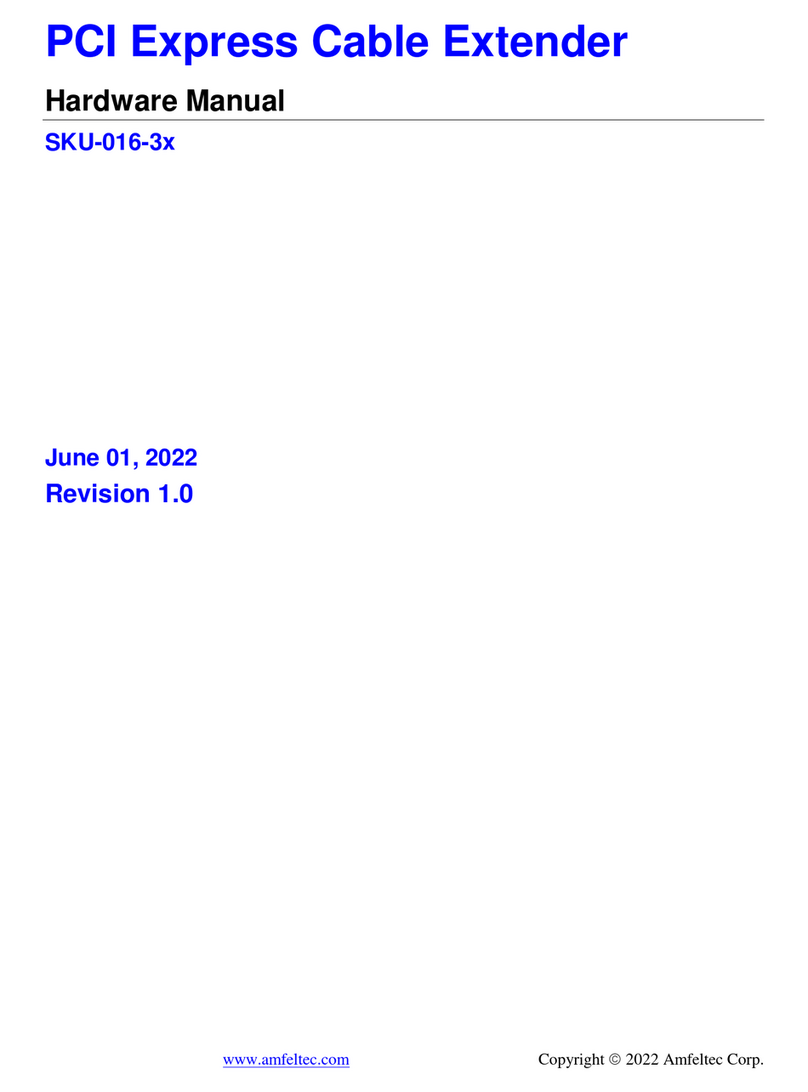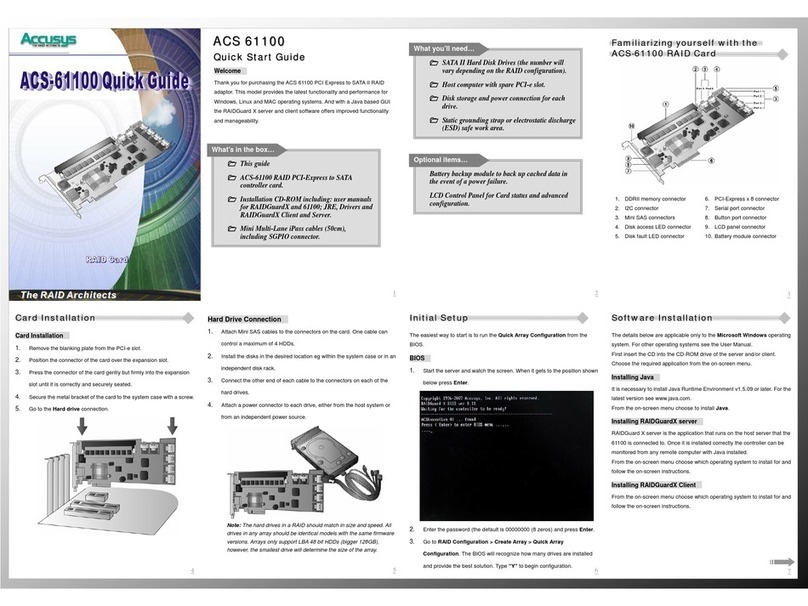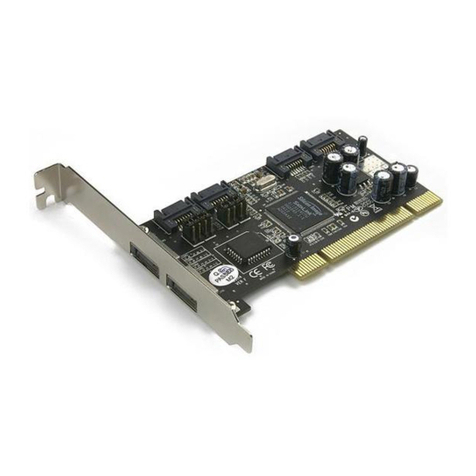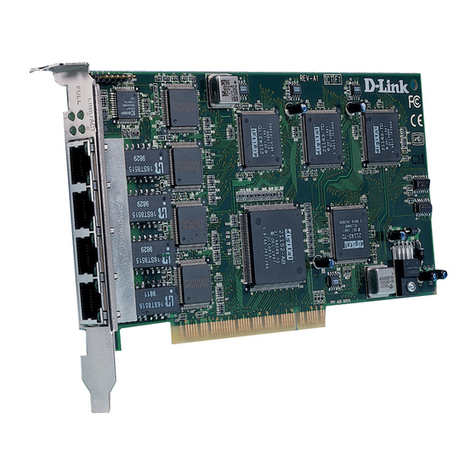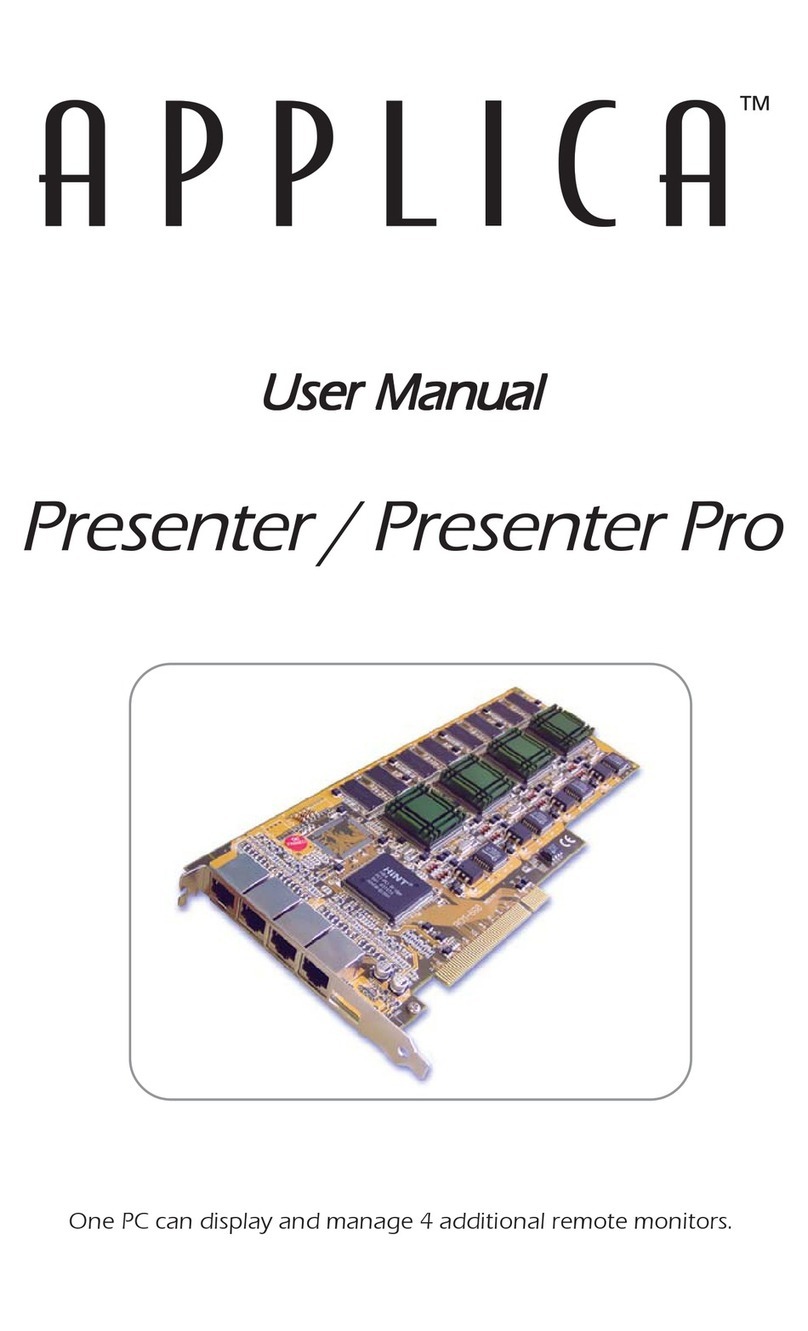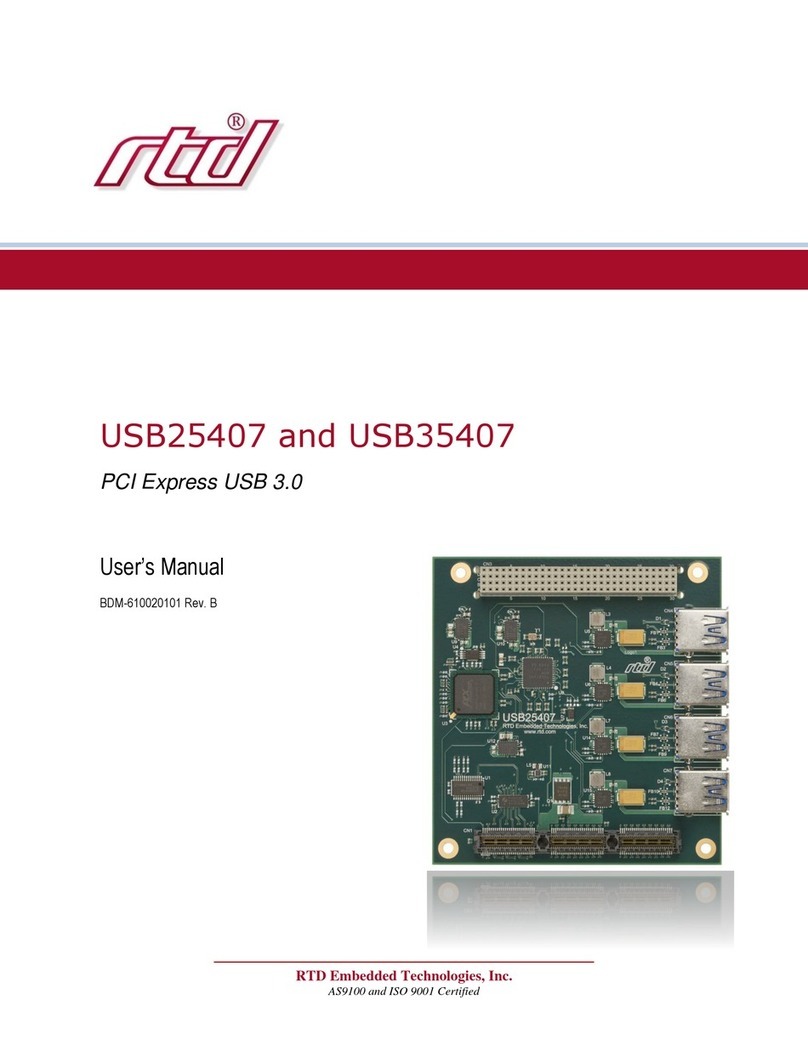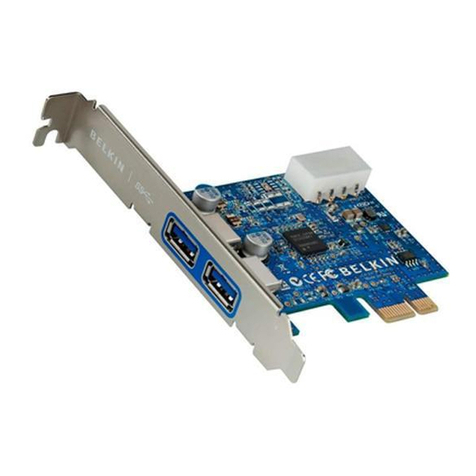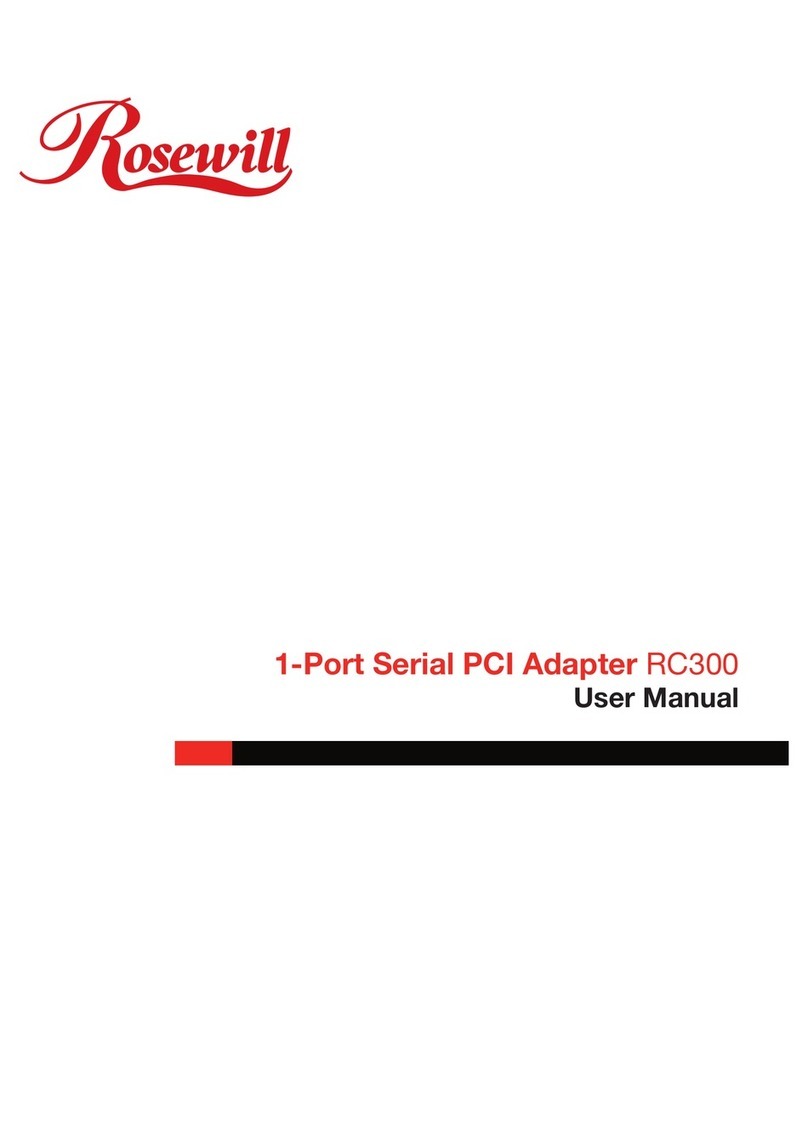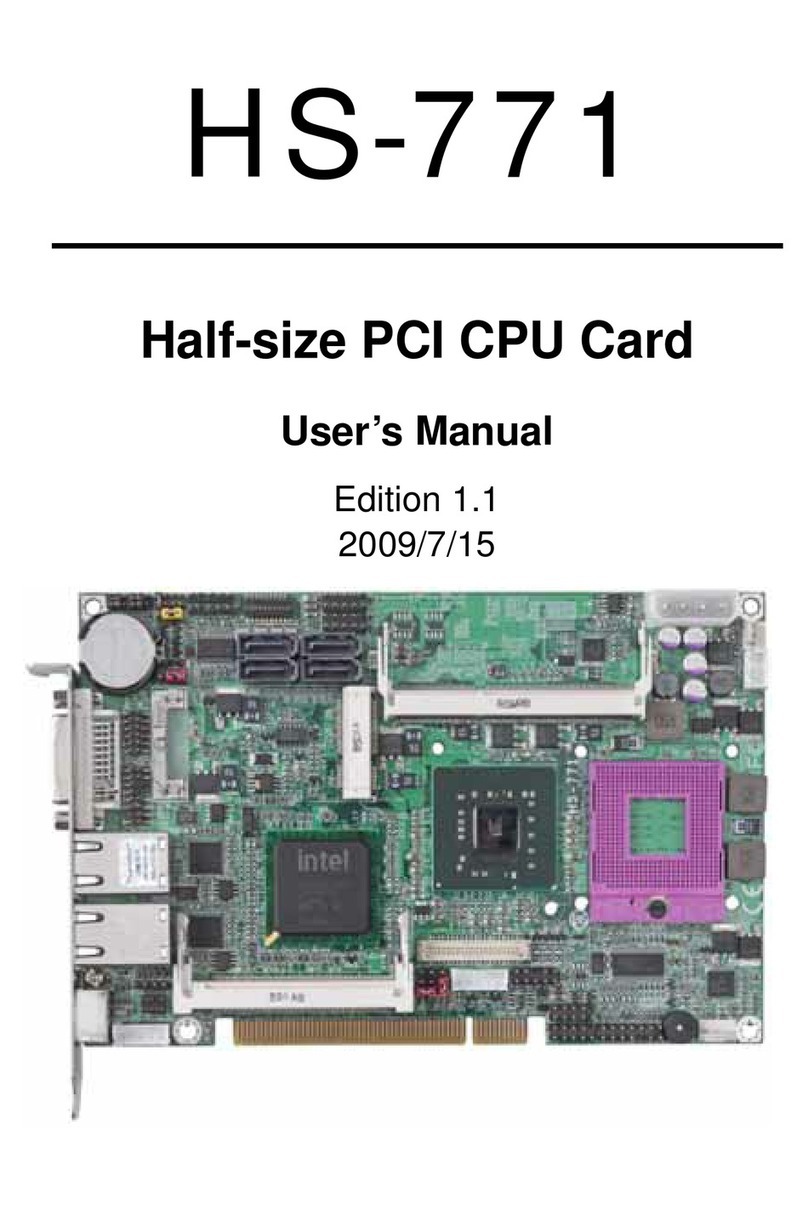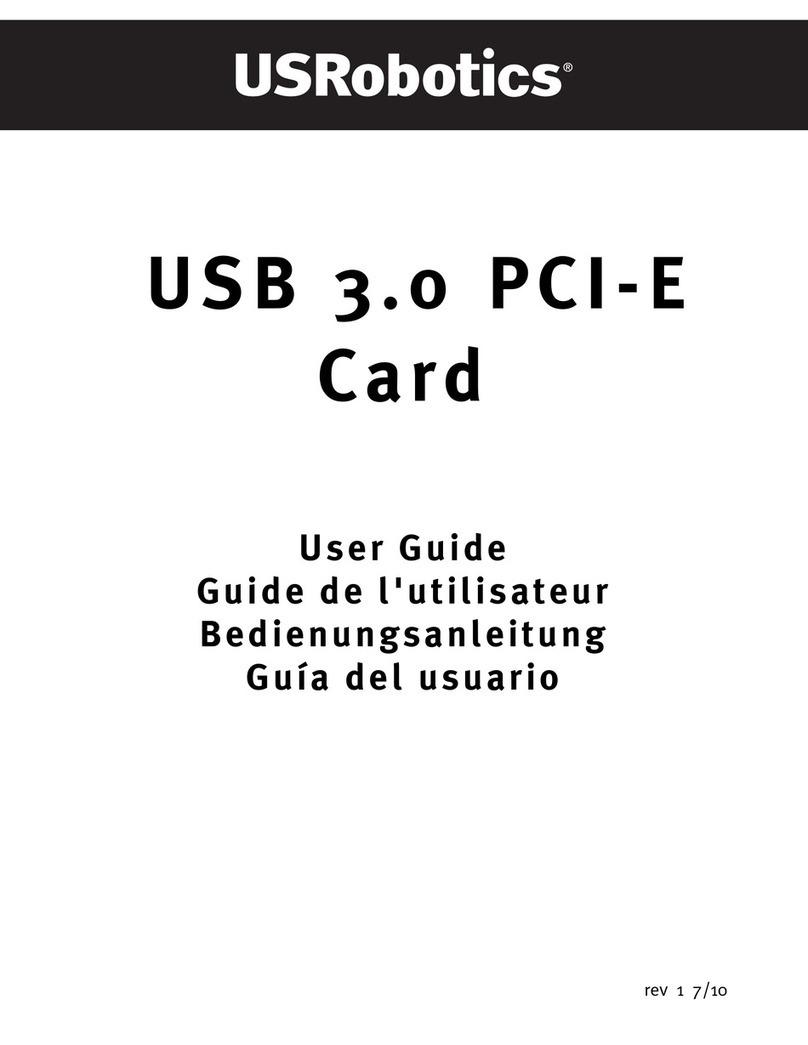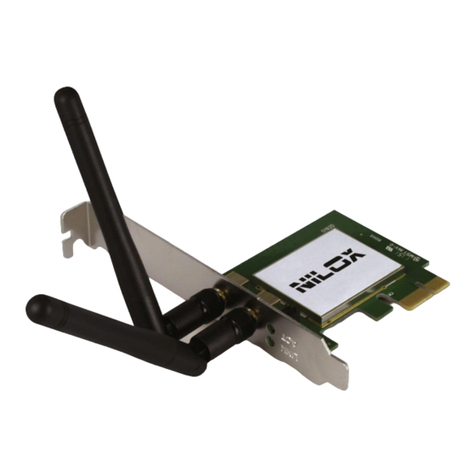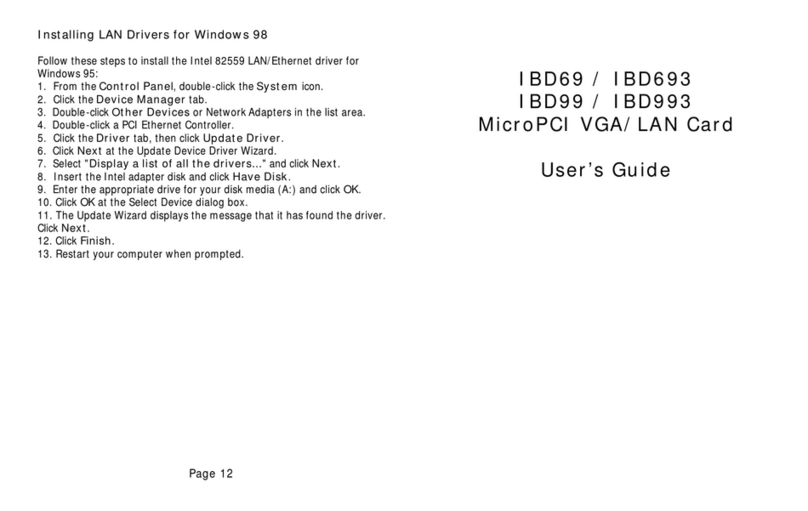Addi-Data APCI-3003 Parts list manual

DIN EN ISO 9001:2000
certified
A
DDI-DATA GmbH
Dieselstraße 3
D-77833 OTTERSWEIER
+49 (0)7223 / 9493 – 0
Technical description
APCI-3003
Analog input board, optically isolated
Edition: 01.09 – 11/2007

Product information
This manual contains the technical installation and important instructions for correct commissioning
and usage, as well as production information according to the current status before printing.
The content of this manual and the technical product data may be changed without prior notice.
ADDI-DATA GmbH reserves the right to make changes to the technical data and the materials
included herein.
Warranty and liability
The user is not permitted to make changes to the product beyond the intended use, or to interfere with
the product in any other way.
ADDI-DATA shall not be liable for obvious printing and phrasing errors. In addition, ADDI DATA, if
legally permissible, shall not be liable for personal injury or damage to materials caused by improper
installation and/or commissioning of the board by the user or improper use, for example, if the board is
operated despite faulty safety and protection devices, or if notes in the operating instructions regarding
transport, storage, installation, commissioning, operation, thresholds, etc. are not taken into
consideration. Liability is further excluded if the operator changes the board or the source code files
without authorisation and/or if the operator is guilty of not monitoring the permanent operational
capability of working parts and this has led to damage.
Copyright
This manual, which is intended for the operator and its staff only, is protected by copyright.
Duplication of the information contained in the operating instructions and of any other product
information, or disclosure of this information for use by third parties, is not permitted, unless this right
has been granted by the product licence issued. Non-compliance with this could lead to civil and
criminal proceedings.
ADDI-DATA software product licence
Please read this licence carefully before using the standard software. The customer is only granted the
right to use this software if he/she agrees with the conditions of this licence.
The software must only be used to set up the ADDI-DATA boards.
Reproduction of the software is forbidden (except for back-up and for exchange of faulty data
carriers). Disassembly, decompilation, decryption and reverse engineering of the software are
forbidden. This licence and the software may be transferred to a third party if this party has acquired a
board by purchase, has agreed to all the conditions in this licence contract and the original owner does
not keep any copies of the software.
Trademarks
ADDI-DATA is a registered trademark of ADDI-DATA GmbH.
Turbo Pascal, Delphi, Borland C, Borland C++ are registered trademarks of Borland Insight Company.
Microsoft C, Visual C++, Windows XP, 98, Windows 2000, Windows 95, Windows NT,
EmbeddedNT and MS DOS are registered trademarks of Microsoft Corporation.
LabVIEW, LabWindows/CVI, DasyLab, Diadem are registered trademarks of National Instruments
Corp.
CompactPCI is a registered trademark of PCI Industrial Computer Manufacturers Group.
VxWorks is a registered trademark of Wind River Systems Inc.

WARNING
In case of wrong uses and if the board is not used for
the purpose it is intended:
♦people may be injured
♦the board, PC and peripheral may be destroyed.
♦the environment may be polluted
♦Protect yourself, the others and the environment!
♦Read carefully the safety precautions (yellow leaflet).
If this leaflet is not with the documentation, please contact us
and ask for it.
♦Observe the instructions of the manual.
Make sure that you do not forget or skip any step. We are not
liable for damages resulting from a wrong use of the board.
♦Used symbols:
iIMPORTANT!
designates hints and other useful information.
WARNING!
It designates a possibly dangerous situation.
If the instructions are ignored the board, PC and/or
peripheral may be destroyed.
3

Contents APCI-3003
1DEFINITION OF APPLICATION ......................................7
1.1 Intended use ........................................................................... 7
1.2 Usage restrictions.................................................................... 7
1.3 General description of the board ........................................... 7
2USER...........................................................................9
2.1 Qualification ........................................................................... 9
2.2 Personal protection................................................................. 9
3HANDLING OF THE BOARD.........................................10
4TECHNICAL DATA ......................................................11
4.1 Electromagnetic compatibility (EMC) ................................... 11
4.2 Physical set-up of the board................................................. 11
4.3 Options.................................................................................. 12
4.4 Limit values............................................................................ 12
4.4.1 Analog inputs...............................................................................12
4.4.2 Digital inputs.................................................................................14
4.4.3 Digital outputs..............................................................................14
4.4.4 Timer (interruptible), 16-bit............................................................14
4.5 Component scheme.............................................................. 15
5INSTALLATION OF THE BOARD....................................16
5.1 Opening the PC..................................................................... 16
5.2 Selecting a free slot .............................................................. 16
5.3 Plugging the board into the slot ........................................... 17
5.4 Closing the PC ...................................................................... 17
6SOFTWARE ................................................................18
6.1 Board registration ................................................................. 19
6.1.1 Installation of a new board..........................................................19
ADDevice Manager.....................................................................20
6.1.2 Changing the registration of a board..........................................21
Description of the ADDIREG program...........................................21
Test the board registration............................................................23
6.2 Questions and software downloads on the web................... 24
7CONNECTING THE PERIPHERAL..................................25
7.1 Connector pin assignment.................................................... 25
4

APCI-3003 Contents
7.1.1 Analog inputs ..............................................................................28
7.1.2 Digital inputs and outputs............................................................28
7.2 Connection to the screw terminal panels............................. 30
8FUNCTIONS OF THE BOARD .......................................31
8.1 Block diagram....................................................................... 31
8.2 Analog inputs ........................................................................ 31
8.2.1 Overview......................................................................................31
8.2.2 Voltage ranges............................................................................31
8.2.3 Analog input switch.....................................................................32
8.2.4 Input modes of the analog inputs...............................................32
1) Simple mode ................................................................................. 32
2) Scan modes ................................................................................... 33
3) Sequence modes............................................................................ 36
4) Auto refresh mode......................................................................... 38
9STANDARD SOFTWARE...............................................39
9.1 Software functions................................................................. 39
9.2 Software samples.................................................................. 42
10 APPENDIX .................................................................43
10.1 Glossary ................................................................................ 43
10.2 Index ..................................................................................... 46
5

Contents APCI-3003
Figures
Fig. 3-1: Correct handling................................................................10
Fig. 4-1: Component scheme.........................................................15
Fig. 5-1: Types of slots.......................................................................16
Fig. 5-2: Inserting the board.............................................................17
Fig. 5-3: Fastening the board at the back cover .............................17
Fig. 6-1: New inserted board (example)...........................................19
Fig. 6-2: ADDevice Manager............................................................20
Fig. 6-3: ADDIREG registration program (example)...........................21
Fig. 7-1: 15-pin SUB-D male connector (analog inputs) ...................25
Fig. 7-2: Analog input at the PX 901-AG...........................................25
Fig. 7-3: 16-pin connector on a 15-pin SUB-D female connector....26
Fig. 7-4: Digital inputs and outputs at the PX 901-ZG .......................26
Fig. 7-5: Connection principle of the analog inputs.........................28
Fig. 7-6: Connection of the digital inputs.........................................28
Fig. 7-7: Connection of the digital outputs.......................................29
Fig. 7-8: Connection of the APCI-3003 to the screw terminal panels30
Fig. 8-1: Block diagram of the APCI-3003 ........................................31
Tables
Table 9-1: Supported software functions..........................................39
Table 9-2: Supported software samples for the APCI-3003..............42
6

APCI-3003 Definition of Application
1DEFINITION OF APPLICATION
1.1 Intended use
The APCI-3003 board must be inserted in a PC with PCI 5V/32-bit (PCI 3.3V/64-
Bit) which is used as electrical equipment for measurement, control and
laboratory pursuant to the norm EN 61010-1 (IEC 61010-1). The used personal
computer (PC) must fulfil the requirements of IEC 60950-1 or EN 60950-1 and
55022 or IEC/CISPR 22 and EN 55024 or IEC/CISPR 24.
The use of the board APCI-3003 in combination with external screw terminal
panels requires correct installation according to IEC 60439-1 or EN 60439-1
(switch cabinet / switch box).
1.2 Usage restrictions
The APCI-3003 board must not to be used as safety related part (SRP).
The board must not be used for safety related functions, for example for
emergency stop functions.
The APCI-3003 board must not be used in potentially explosive atmospheres.
The APCI-3003 board must not be used as electrical equipment according to the
Low Voltage Directive 2006/95/EC.
1.3 General description of the board
Data exchange between the APCI-3003 board and the peripheral is to occur
through a shielded cable. This cable must be connected to the 15-pin SUB-D
connector of the APCI-3003 board.
The board has 4 input channels for processing analog signals.
The use of the board APCI-3003 in combination with external screw terminal
panels is to occur in a closed switch cabinet.
The PX 901-AG screw terminal panel allows connecting the analog signals to the
peripheral equipment through the ST3003-A cable.
The use of the APCI-3003 board in combination with external screw
terminal panels or relay boards is to occur in a closed switch cabinet; the
installation is to be effected competently.
The connection with our standard cable ST3003-A complies with the minimum
specifications as follows:
- metallized plastic hoods
- shielded cable
- cable shield folded back and firmly screwed to the connector shell.
7

Definition of Application APCI-3003
The use of the board in a PC could change the PC features regarding noise
emission and immunity. Increased noise emission or decreased noise immunity
could result in the system are not being conform anymore.
Check the shielding capacity of the PC housing and of the cable prior to
putting the device into operation.
The use of the board according to its intended purpose includes observing all
advices given in the Technical description and in the Safety leaflet.
Uses beyond these specifications are not allowed. The manufacturer is not liable
for any damages which would result from the non-observance of this clause
Make sure that the board remains in its protective packing until it is used.
Do not remove or alter the identification numbers of the board.
If you do, the guarantee expires.
8

APCI-3003 User
2USER
2.1 Qualification
Only persons trained in electronics are entitled to perform the following works:
-installation
- use
- maintanance.
2.2 Personal protection
Consider the country-specific regulations about:
- the prevention of accidents
- electrical and mechanical installations
- radio interference suppression.
9

Handling of the board APCI-3003
3HANDLING OF THE BOARD
Fig. 3-1: Correct handling
10

APCI-3003 Technical data
4TECHNICAL DATA
4.1 Electromagnetic compatibility (EMC)
The board APCI-3003 complies with the European EMC directive. The tests were
carried out by a certified EMC laboratory in accordance with the norm from the
EN 61326 series (IEC 61326). The limit values as set out by the European EMC
directive for an industrial environment are complied with.
The respective EMC test report is available on request.
4.2 Physical set-up of the board
The board is assembled on a 4-layer printed circuit card.
Dimensions:
175 mm
99 mm
Weight: ...................................................... approx. 160 g
Installation in: ........................................... 32/64-bit PCI slot
5 V or 3.3 V
Connection to the peripheral:..................... 37-pin SUB-D male connector
Accessories1:
Cables:
For the analog inputs: ................................Standard round cable ST3003-A
For the digital I/O:...................................... Standard round cable ST3003-D
Screw terminal panels:
Connection of the analog inputs: ...............PX901-AG
Connection of the digital I/O: ....................PX901-ZG
WARNING!
The supply lines must be installed safely against mechanical
loads.
1Not included in the standard delivery.
11

Technical data APCI-3003
4.3 Options
The board APCI-3003 is available in the following options:
PC-Diff.: ................................................... Current input for 1 differential channel
................................................................... (0-20 mA, 4-20 mA)
Measuring range With 16-bit resolution
0 mA Corresponds 0 digit
4 mA Corresponds 13107 digits
20 mA Corresponds 65535 digits
Note: At 4-20 mA a reduced precision is possible.
4.4 Limit values
Max. Altitude: ........................................... up to 2000 m above sea level
Operating temperature: ............................. 0 to 60°C
Storage temperature: ................................. -25 to 70°C
Relative humidity at indoor installation
50% at +40 °C
80% at +31 °C
Minimum PC requirements:
PCI BIOS from Version 1.0
Bus speed: ................................................. < 33 MHz
Operating system: ..................................... Windows 2000, XP, Linux (other
operating systems on request)
Slot:............................................................ PCI 5 V or PCI 3.3 V, 32-bit
Current consumption (without load): ........ typic. See table ± 10%
APCI-3003
+ 5 V from PC 1.55 A
4.4.1 Analog inputs
Number of analog inputs: .......................... 4 differential channels
Analog resolution: ..................................... 16-bit, 1 in 65535
Max. sampling rate: ................................... 400 kHz
Data transfer: ............................................. data to the PC via FIFO buffer,
via I/O commands,
interrupt at EOC or DMA transfer at
EOC
12

APCI-3003 Technical data
Acquisition types: ......................................1) Simple mode
2) Scan mode
3) Sequence mode
4) Auto refresh mode
Conversion start: ........................................1) software trigger
2) external trigger
3) trigger timer
Analog input ranges (adjustable by software):
Voltage:......................................................Unipolar: 0-10 V
1 LSB: 153 µv
Bipolar: ± 10 V (selectable by
software)
1 LSB: 305 µv
Current (optional):......................................Unipolar: 0-20 mA
(When Unipolar, gain = 2)
Gain:...........................................................Gain 1, 2, 5, 10 (Gain is configurable
....................................................................through software)
Overvoltage protection:..............................+/- 40 V2
Bandwith (-3 dB): ......................................Limited to 212.2 kHz (-3 dB) with
....................................................................lowpass filter first level
Input impedance:........................................1012Ω|| 5 nF
Digital codification: ...................................linear
Analog Input Binary Code HEX Code
Bipolar Unipolar
- 10V 0V 0000000000000000 0000
0V 5 V 1000000000000000 8000
+10 V 10 V 1111111111111111 FFFF
Optical isolation from the PC:....................1000 V
Temperature drift: ......................................10 ppm/K
Linearity error of the ADC:........................±1.22 mV (typ.)
±2.44 mV (max.)
Calibration of the inputs:
Bipolar offset calibration value:.................-0.00061 V (tolerance: ±0.0017 V)
Unipolar offset calibration value:...............0.01 V (tolerance: ±0.0017 V)
Bipolar gain calibration value:...................9.995 V (tolerance: ±0.0017 V)
Unipolar gain calibration value:.................9.995 V (tolerance: ±0.0017 V)
Calibration channel: ...................................0
Measurement method:................................Averaging of more than 200 values
13

Technical data APCI-3003
4.4.2 Digital inputs
Number: .................................................... 4
Input current at 24 V: ............................... 10.5 mA typ.
Input voltage range: .................................. 0-30 V
Optical isolation from the PC:................... 1000 V DC (one second tested)
Logic "0" level: ......................................... 0-14 V
Logic "1" level: ......................................... 19-30 V
Frequency: ................................................. 1 MHz
4.4.3 Digital outputs
Number: .................................................... 4
Type: ......................................................... Open Collector (OC)
Max. switch current: ................................. 50 mA typ.
Voltage range: ........................................... 5-30 V
Optical isolation from the PC:................... 1000 V DC (one second tested)
Switching time (load 50 mA):
Switch on:.................................................. 2 µs
Switch off: ................................................. 36 µs
4.4.4 Timer (interruptible), 16-bit
Number:..................................................... 1
Time base: ................................................. us, ms, s
14

APCI-3003 Technical data
4.5 Component scheme
Fig. 4-1: Component scheme
15

Installation of the board APCI-3003
5INSTALLATION OF THE BOARD
iIMPORTANT!
Do observe the safety precautions (yellow leaflet)!
5.1 Opening the PC
♦Switch off your PC and all the units connected to the PC
♦Pull the PC mains plug from the socket.
♦Open your PC as described in the manual of the PC manufacturer.
5.2 Selecting a free slot
Plug the board into a free PCI-5 V or PCI-3.3 V (32/64-bit) slot.
Fig. 5-1: Types of slots
♦Remove the back cover of the selected slot according to the instructions of the
PC manufacturer
♦Keep the back cover. You will need it if you remove the board
♦Discharge yourself from electrostatic charges.
♦Take the board out of its protective pack.
16

APCI-3003 Installation of the board
5.3 Plugging the board into the slot
♦Insert the board vertically into the chosen slot.
Fig. 5-2: Inserting the board
♦Fasten the board to the rear of the PC housing with the screw which was
fixed on the back cover.
Fig. 5-3: Fastening the board at the back cover
♦Tighten all the loosen screws.
5.4 Closing the PC
♦Close your PC as described in the manual of the PC manufacturer.
17

Software APCI-3003
6SOFTWARE
In the following chapter you will find a description of the delivered software and
its possible applications.
iIMPORTANT!
Further information for installing and uninstalling the different
drivers is to be found in the delivered description "Installation
instructions for the PCI and ISA bus".
A link to the corresponding PDF file is available in the navigation panel
(Bookmarks) of Acrobat Reader.
iIMPORTANT!
The supported software functions for the APCI-3003 are listed
in chapter Fehler! Verweisquelle konnte nicht gefunden
werden..
The board is supplied with a CD-ROM containing the ADDIPACK software
package for Windows NT 4.0 and Windows XP/2000/98.
ADDIPACK is composed of following programs:
ADDIREG: The ADDIREG registration program is a 32-bit program for
Windows NT 4.0 and Windows XP/2000/98. The user can register all hardware
information necessary to operate the ADDI-DATA PC boards.
ADDIDRIVER contains API functions to operate the “universal ADDI-DATA
boards” in 32-bits.
ADDevice Manager configures the resources of the ADDI-DATA virtual board
(see below).
ADDI-DATA virtual board:
ADDI-DATA software is based on the principle of a virtual board: It
transposes the different functions (e.g. analog inputs, digital outputs, timer,
etc.) of all inserted ADDI-DATA boards as the functions of a single (virtual)
board. The virtual board features a pool of functions, the functionality of which
can be called up without calling a specific board.
ADDEVICE MAPPER was specifically developed for the ADDIPACK boards
to facilitate the management of the virtual board. With this program you can
optimally adapt the virtual board to your application requirements.
IMPORTANT!
For some functions of the ADDEVICE MAPPER program the browser
Internet Explorer 6 or higher has to be installed on your PC.
18

APCI-3003 Software
6.1 Board registration
When starting the set-up of ADDIREG, the APCI-3003 is automatically
recognised and registered.
6.1.1 Installation of a new board
If a new board is recognised, the following window is displayed:
Fig. 6-1: New inserted board (example)
The boards which have been removed from the PC since the last ADDIREG start
are listed in the upper table
The new inserted boards are listed in the lower table.
In case further information is required for the operation of the board, click on
"More Information". ADDevice Manager is started.
19

Software APCI-3003
ADDevice Manager
Fig. 6-2: ADDevice Manager
The following parameters are displayed for every inserted board:
First column:
- Board name
- Board index: Number that is allocated to the board when it is registered in
ADDIREG.
- Slot number
- IRQ line
- Different addresses which are automatically allocated to the board by the BIOS.
Other columns:
The program distinguishes between the resources (analog/digital input/output,
watchdog etc.) of the virtual board (V, software) and the real board (R, board).
The following parameters are listed
- Module number,
- Number of resources
- Index: The first index line represents the number of the first resource (left:
virtual resource - right: real board). The second index line represents the
number of the last resource (left: virtual resource - right: real board).
- Type (24 V/5 V, voltage/current, HS/OC - High-Side/Open collector etc.): If in
this line “various” is showed, the resources are of different types. “Undefined”
means that the type of these resources is not defined.
- IRQ: If the input channels are interruptible, the program displays the number of
the first and of the last input/output channel
20
Other manuals for APCI-3003
1
This manual suits for next models
1
Table of contents
Other Addi-Data PCI Card manuals
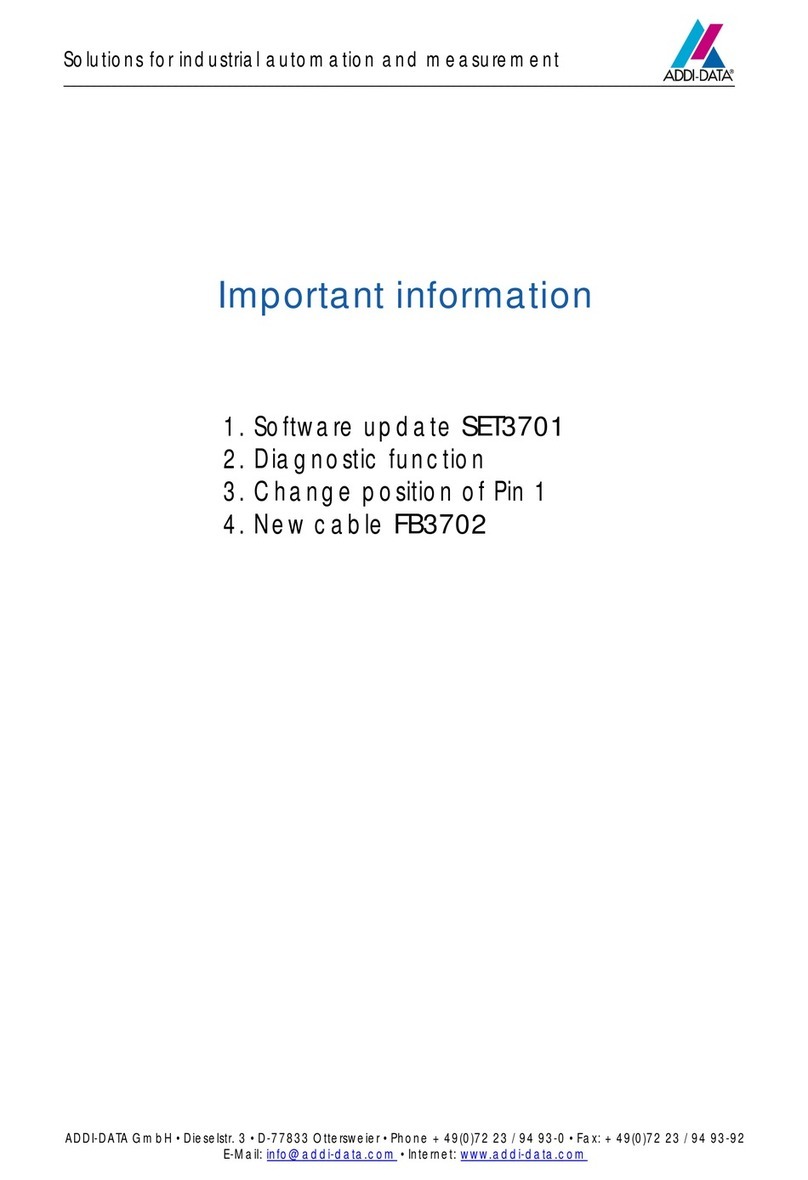
Addi-Data
Addi-Data APCI-3701 Parts list manual
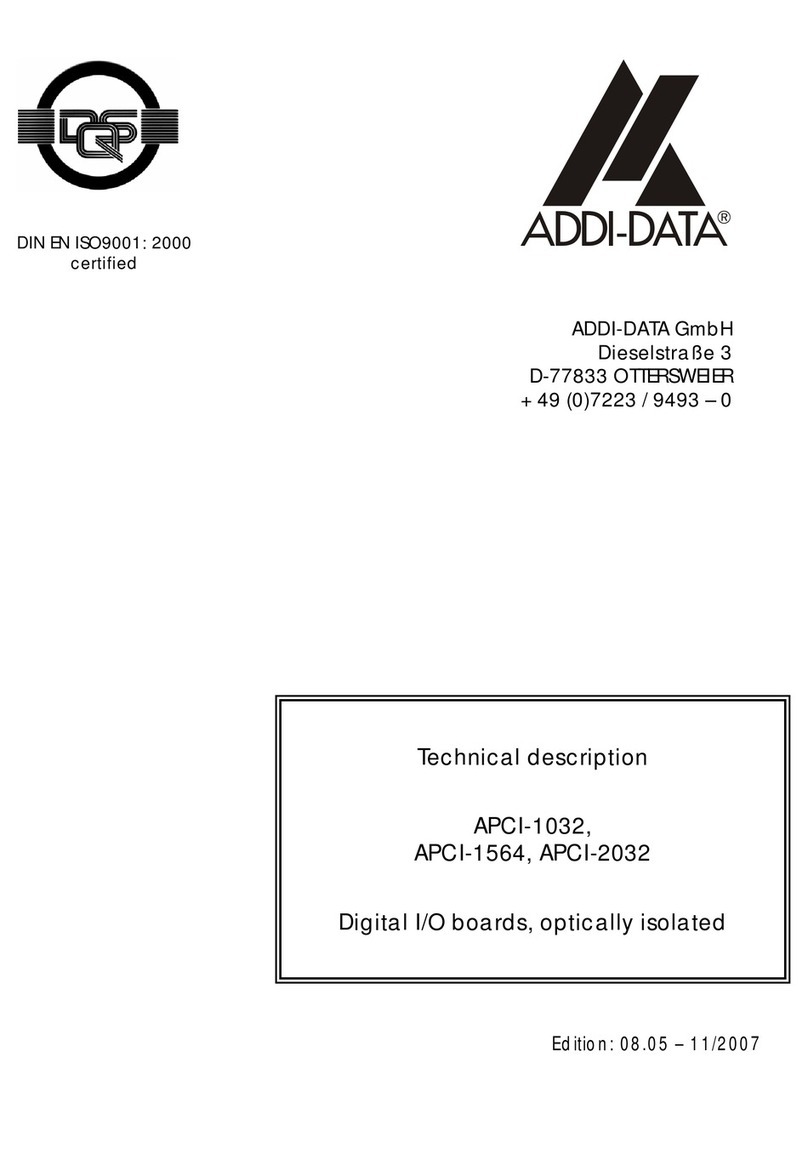
Addi-Data
Addi-Data APCI-2032 Parts list manual
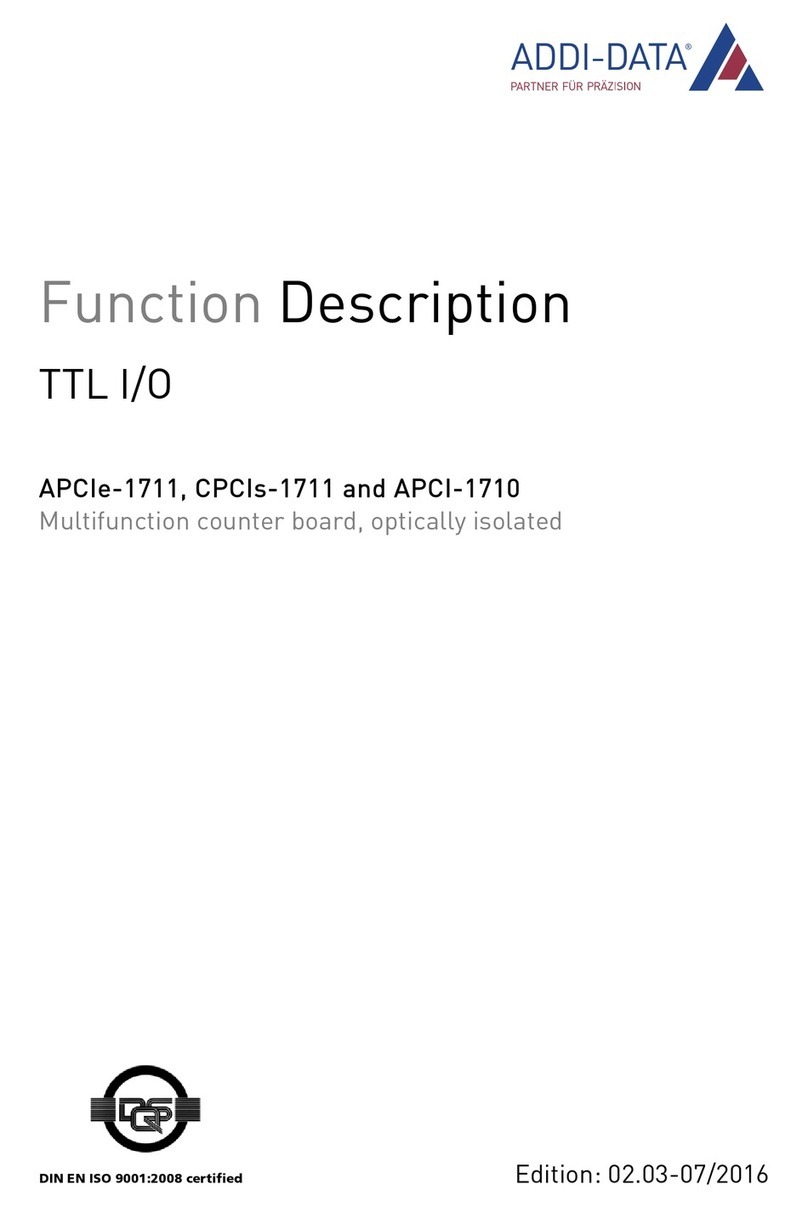
Addi-Data
Addi-Data APCIe-1711 Parts list manual
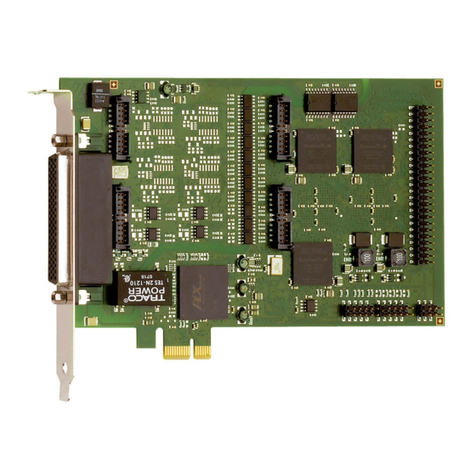
Addi-Data
Addi-Data APCIe-1711 Parts list manual
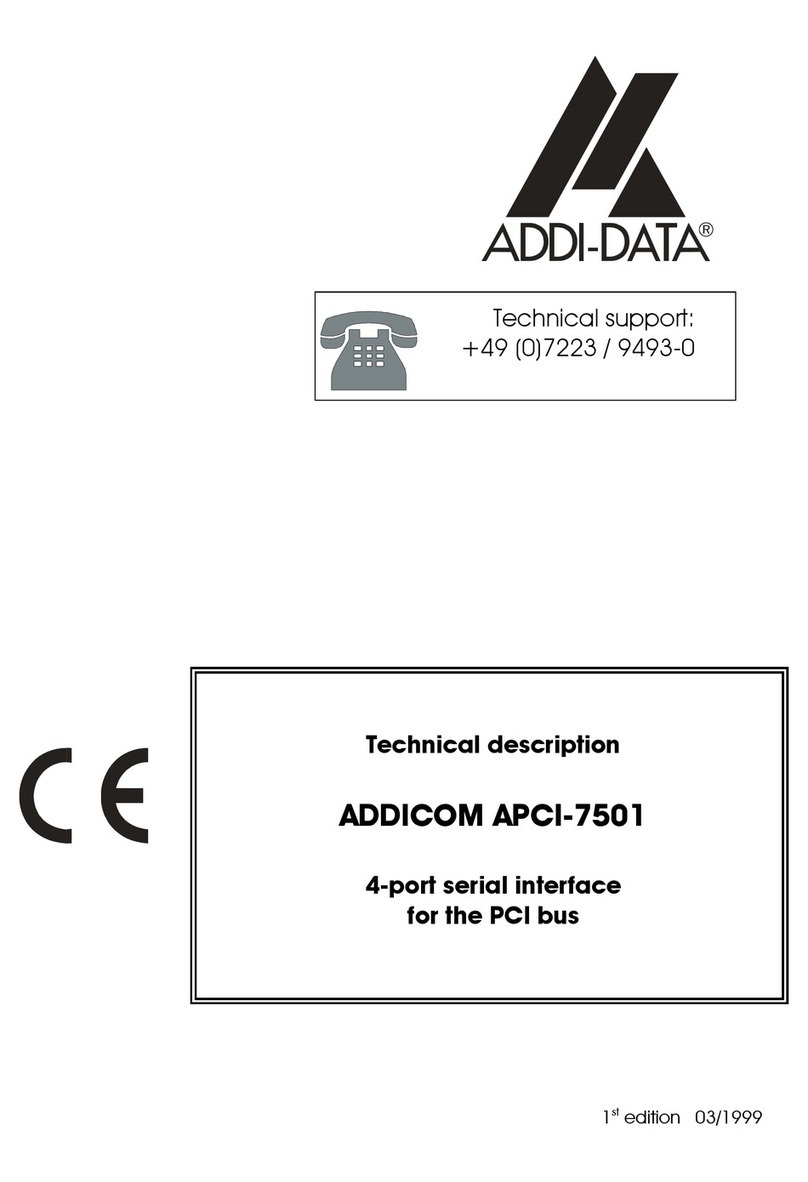
Addi-Data
Addi-Data ADDICOM APCI-7501 Parts list manual
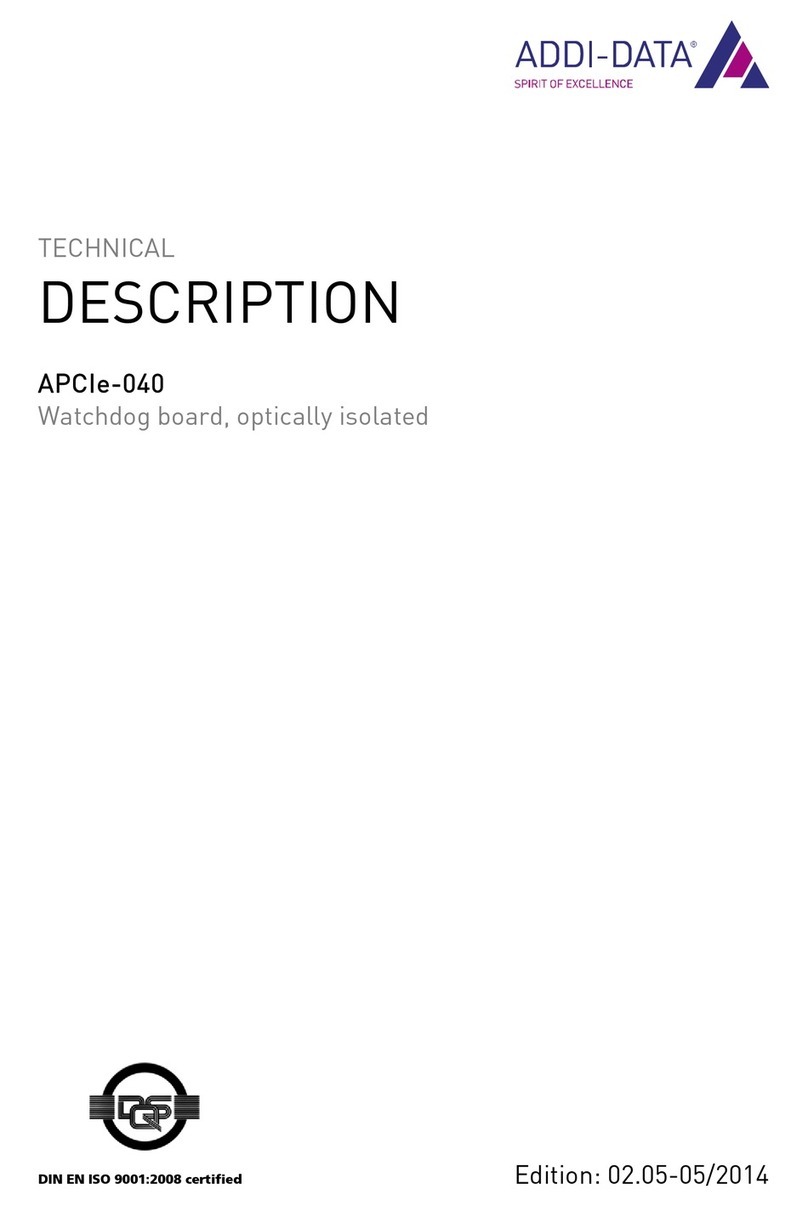
Addi-Data
Addi-Data APCIe-040 Parts list manual
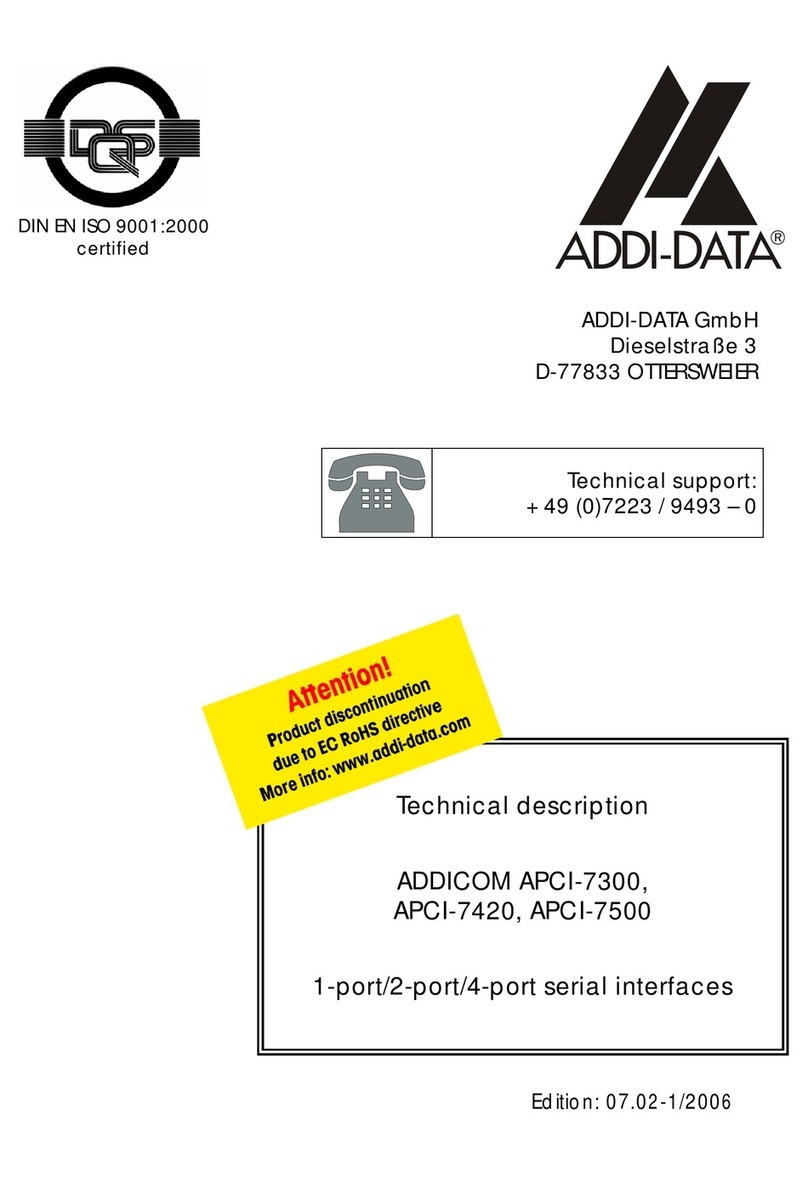
Addi-Data
Addi-Data ADDICOM APCI-7300 Parts list manual
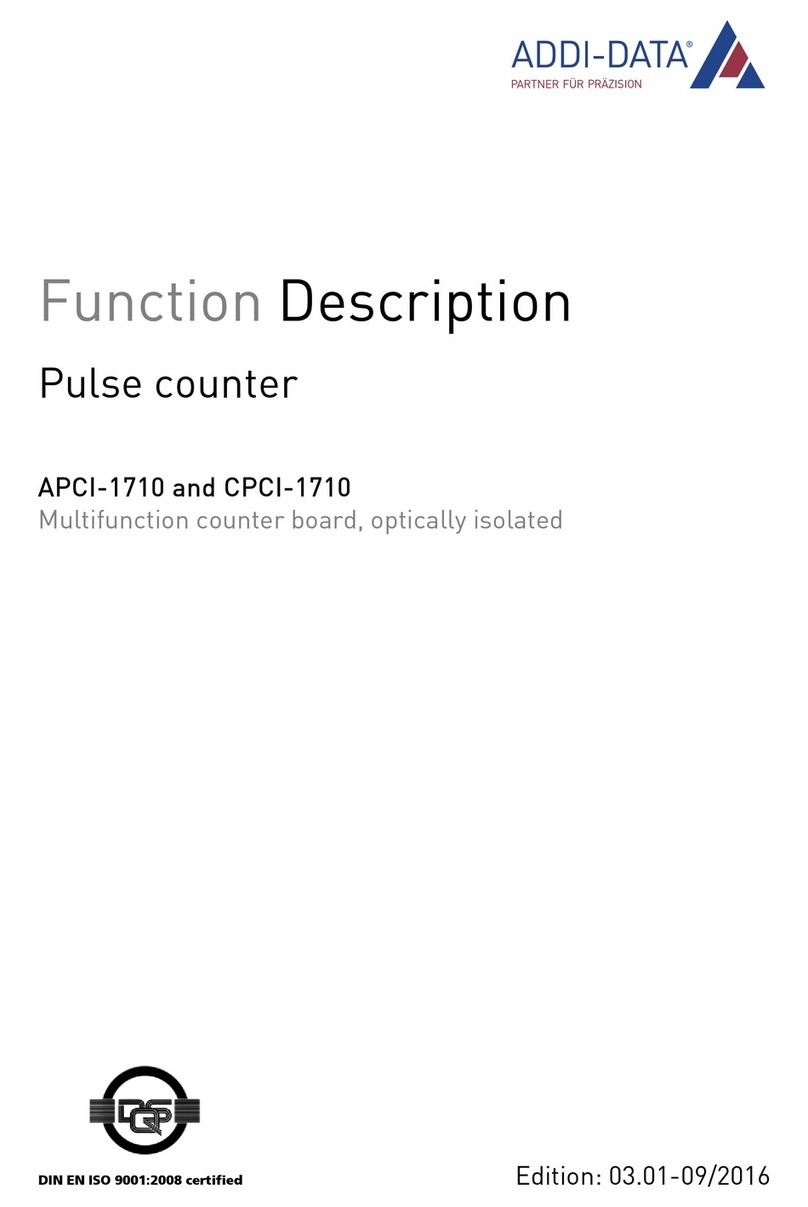
Addi-Data
Addi-Data APCI-1710 User manual
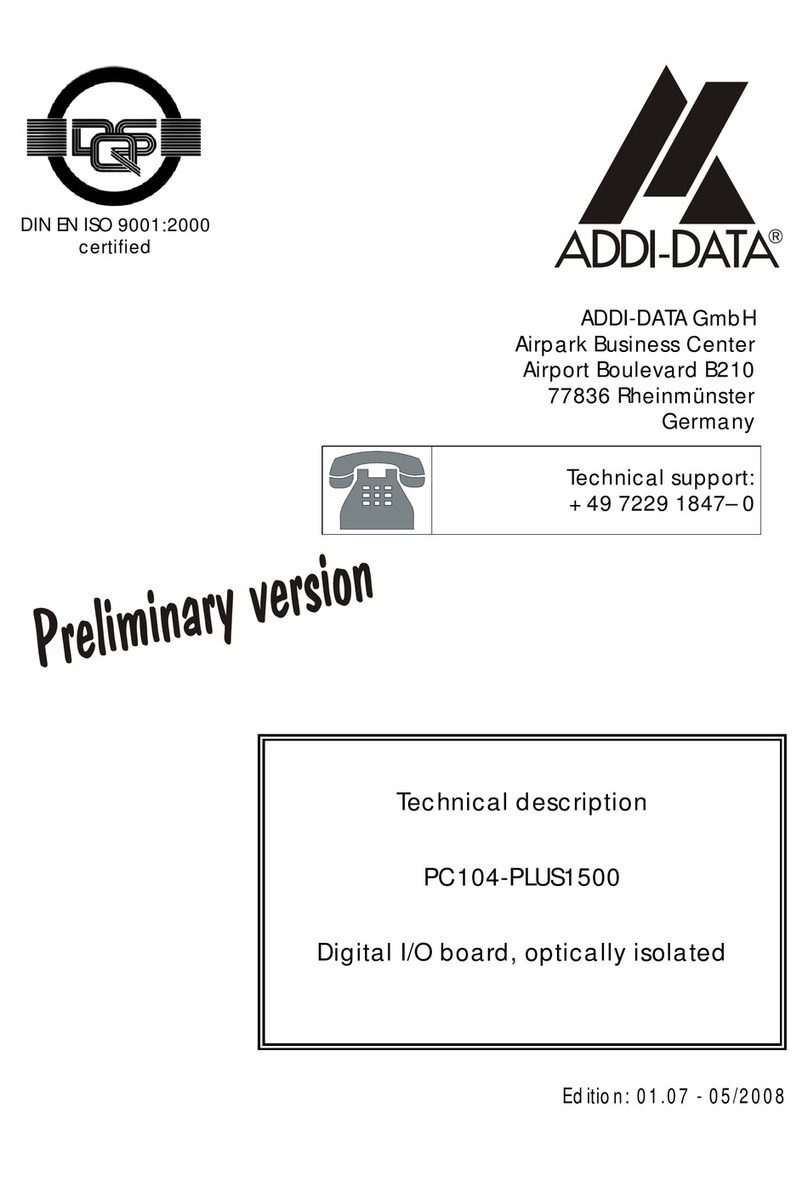
Addi-Data
Addi-Data PC104-PLUS1500 Parts list manual
